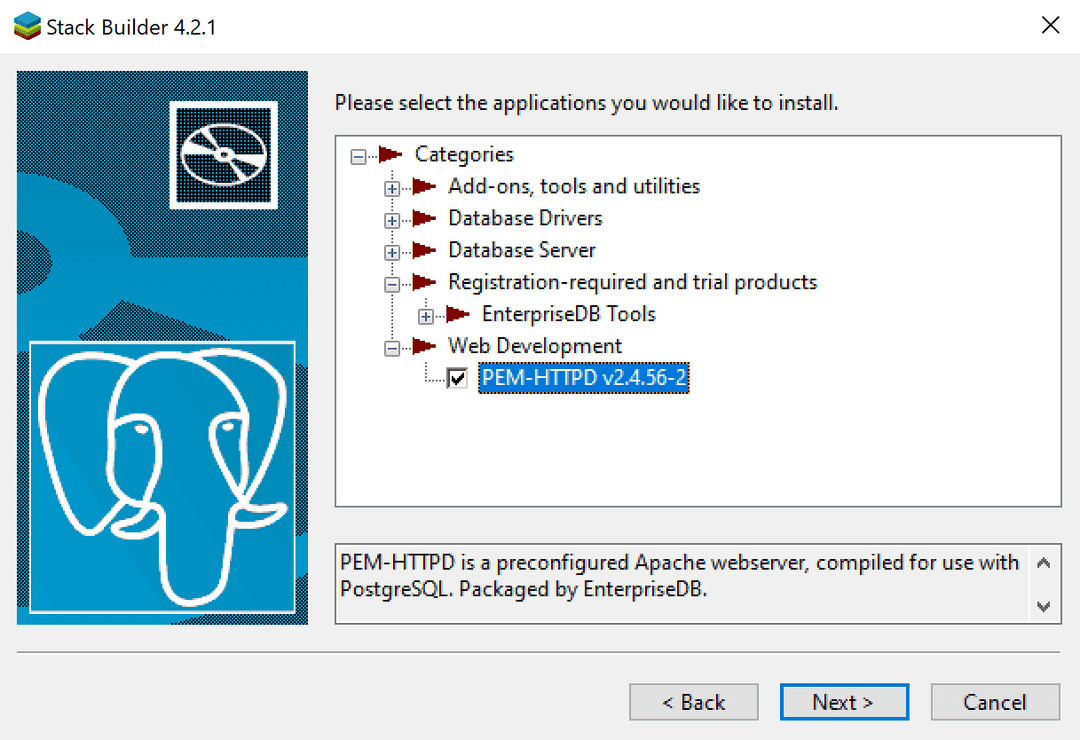Upgrading the PEM web server v10
The PEM web server is used to serve the PEM web application. On Linux, the web server can be NGINX or Apache HTTPD, the default for new installations from PEM 10.0 onwards is NGINX. PEM doesn't bundle the web server but instead uses the packages provided by the system package manager for your chosen web server. You can update the web server as required using your package manager.
On Windows, the PEM installer bundles a version of Apache HTTPD called PEM-HTTPD. Therefore you can only update the web server using an EDB installer.
Upgrading the web server on Linux
Important
If you're using Red Hat Enterprise Linux (RHEL), Rocky Linux, AlmaLinux, or Oracle Linux, and you're updating the web server to address a vulnerability, read Versioning in RHEL and RHEL derivatives.
If you're running Linux, manage the webserver along with other system software on your servers. We recommend always using the latest version available from your package manager.
You don't need to stop PEM or back up any files prior to upgrade. Initiate the upgrade from your package manager.
RHEL / Rocky Linux / AlmaLinux / Oracle Linux
Run the following command, substituting <web-server> for nginx or httpd as appropriate.
sudo yum update <web-server>
Debian / Ubuntu
Run the following command, substituting <web-server> for nginx or apache2 as appropriate.
sudo apt update sudo apt upgrade <web-server>
SLES
Run the following command, substituting <web-server> for nginx or apache2 as appropriate.
sudo zypper update <web-server>
Versioning in RHEL and RHEL derivatives
You might notice that the latest version of NGINX or HTTPD available from RHEL or other RHEL derivatives has a significantly older version number than the latest community release. Specifically, RHEL 8 provides NGINX 1.22 and HTTPD 2.4.37. RHEL 9 provides NGINX 1.22 and HTTPD 2.4.62. It's very important to understand that Red Hat builds custom NGINX and HTTPD packages for RHEL and backports security fixes.
For this reason, don't assume that a vulnerability present in the community release is present in the RHEL package of the same version. If you're trying to install a newer version of HTTPD for this reason, it's almost certainly not necessary. See the NGINX versions supported by Red Hat and Apache HTTPD versions supported by Red Hat articles in the Red Hat knowledge base for more information.
Warning
Red Hat doesn't support NGINX or HTTPD packages from the community or built from source. If you're considering using any other source of NGINX or HTTPD on a RHEL system, read the Apache HTTPD versions supported by Red Hat article and make sure you understand the implications.
Upgrading PEM-HTTPD on Windows
PEM-HTTPD is bundled with the PEM Windows installer and is also available through Stack Builder. In general it is recommended that you update your PEM installation regularly. Your PEM-HTTPD installation will be automatically updated when you update the PEM application.
If you do not wish to update PEM, or to apply a PEM-HTTPD release which is not yet available in a PEM installer, you can use StackBuilder.
To upgrade using StackBuilder download the latest PostgreSQL or EDB Advanced Server installer for Windows and use Stack Builder or StackBuilder Plus respectively to update PEM-HTTPD. PEM-HTTPD is located under the Web Development category.
